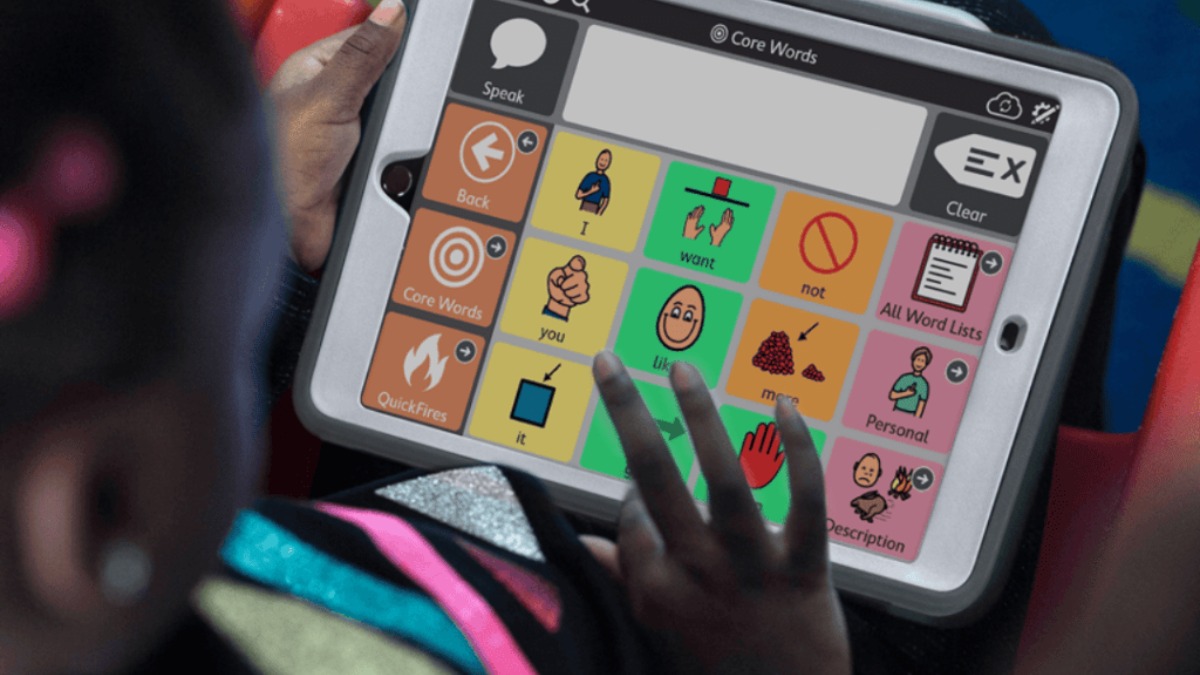DIR Floortime Activities
November 20, 2024
Discover engaging DIR Floortime activities that improve communication and emotional regulation for children with autism.
.jpg)
Understanding DIR Floortime Therapy
Development of the Approach
DIR Floortime Therapy was initially developed by psychiatrist Dr. Stanley Greenspan in the 1980s. The approach integrates principles of human development with findings regarding sensory and motor development, creating a comprehensive framework aimed at supporting children with various developmental challenges, particularly those diagnosed with Autism Spectrum Disorders (ASD).
Its foundation is built on understanding how children grow and develop through interactions and emotional connections. By focusing on the "Developmental, Individual differences, and Relationship-based" (DIR) model, the therapy aims to enhance emotional and social capacity in children.
Child-Led Therapy Model
One of the core features of DIR Floortime Therapy is its child-led approach. This model encourages therapists, parents, and caregivers to follow the child's lead during interactions. This method promotes a sense of empowerment and cultivates active participation in the therapeutic process. By allowing children to guide the interactions based on their interests and needs, this approach supports more meaningful engagement and encourages emotional development.
This child-led strategy stands in contrast to more traditional therapy models, which may adopt a top-down approach where the adult dictates activities. Instead, DIR Floortime embraces the idea that children thrive when they are allowed to explore their world in a manner that feels natural and safe to them.
For more information on the principles and core components, you can refer to our article on 10 things to know about dir floortime. If you are interested in understanding how DIR Floortime can assist with specific challenges such as communication, social skills, or interactions, explore our articles on DIR floortime for autism communication and DIR floortime for autism socialization.
DIR Floortime vs. ABA
When considering therapeutic approaches for children with autism, parents often weigh the benefits of DIR Floortime therapy against those of Applied Behavior Analysis (ABA). While both methods aim to enhance developmental skills in children with autism, their philosophies, methods, and objectives differ significantly.
Comparative Effectiveness
Research indicates that both DIR Floortime and ABA are effective in improving developmental skills among children with autism diagnoses. The approaches vary in focus. DIR Floortime emphasizes emotional and relational development, encouraging children to regulate their emotions and develop communication skills in an interactive play setting. This method fosters autonomy and self-confidence by allowing children to lead their own learning experiences.
In contrast, ABA tends to focus on behavior modification and skill acquisition through structured reinforcement techniques. While it also aims at promoting development, it places less emphasis on emotional growth and more on compliance and observable behaviors. Parents should consider the individual needs and learning styles of their children when selecting a suitable therapy approach.
Therapy ApproachFocus AreasMethodologyGoalsDIR FloortimeEmotional development, social interactionChild-led, interactive playAutonomy, communication, relationship-buildingABABehavior modification, skill acquisitionStructured reinforcementCompliance, observable behavior change
Choosing the Right Approach
Deciding between DIR Floortime and ABA involves several factors. Parents should reflect on the unique qualities, strengths, and challenges their child exhibits. Here are a few considerations:
Parents are encouraged to explore both methods, reviewing their potential impacts on their child's growth. Further insights into DIR Floortime activities can be found in articles like DIR floortime for autism interaction and DIR floortime for autism communication. Understanding the nuances of each therapy will empower parents to make informed decisions for their child's developmental journey.
Core Principles of DIR Floortime
DIR Floortime therapy incorporates specific core principles that guide its approach to supporting children with autism. These principles focus on human development and sensory integration to enhance emotional and cognitive growth.
Human Development Focus
The DIR/Floortime approach prioritizes a child's developmental needs by centering on human development. This model, developed by psychiatrist Dr. Stanley Greenspan in the 1980s, combines principles of developmental psychology with methods that promote social-emotional and cognitive growth. It emphasizes the importance of following a child's lead to foster engagement, allowing them to express their feelings and thoughts in ways that feel comfortable to them.
In DIR Floortime, intervention strategies are tailored to each child's unique developmental level. This personalized approach facilitates skill-building in various areas, including communication, emotional functioning, and parent-child interactions. The therapy promotes active participation, encouraging both children and caregivers to work collaboratively toward shared goals in an environment that nurtures trust and understanding.
Sensory and Motor Integration
Sensory and motor integration plays a crucial role in the DIR Floortime therapy model. Helping children regulate their responses to sensory input is essential for their overall development. This approach has been shown to support children's cognitive and emotional growth through sensory activities that facilitate more meaningful interactions.
Engaging in various activities that challenge their sensory systems allows children to explore and understand their environments. This integration aids in processing sensory information, ultimately leading to better emotional regulation and social interaction skills. By combining sensory integration with developmental principles, DIR Floortime creates an effective framework to support children on the autism spectrum as they navigate their unique developmental journeys.
For parents and caregivers interested in practical applications, exploring DIR Floortime activities can offer valuable insights into facilitating enjoyable and beneficial experiences for children. Additionally, understanding how DIR Floortime enhances skills in areas such as communication, socialization, and interaction is essential for promoting holistic development.
Benefits of DIR Floortime
The DIR Floortime approach offers various advantages that support the development of children diagnosed with autism. Among its key benefits are enhanced communication skills and improved emotional regulation.
Communication Enhancement
One of the primary goals of DIR Floortime therapy is to enhance communication. Through interactive play, children can engage in meaningful exchanges, improving their language skills and overall communicative abilities. DIR Floortime fosters an environment where children feel safe and are encouraged to express themselves. This approach not only boosts their confidence but also enhances their connection with caregivers, leading to more effective communication patterns.
Benefits of Communication EnhancementDescriptionImproved Language SkillsChildren learn to articulate their thoughts and feelings more clearly.Increased EngagementInteractive play fosters joyful communication experiences.Strengthened Affectionate ConnectionsEnhances attachment and trust between children and caregivers, promoting better outcomes in learning and interaction.
Evidence suggests that DIR Floortime has a significant impact on various aspects of communication, including problem-solving and interaction skills. Engaging children in this manner helps to develop essential social skills, which are vital for navigating both personal relationships and broader social settings. For further insights, refer to our article on DIR Floortime for autism communication.
Emotional Regulation
Emotional regulation is another crucial benefit of DIR Floortime therapy. This structured approach helps children learn to manage their feelings effectively. By participating in DIR Floortime activities, children enhance their ability to recognize and respond appropriately to different emotional cues, thereby improving their overall emotional functioning.
Benefits of Emotional RegulationDescriptionGreater Self-RegulationChildren become better equipped to manage their emotions and reactions.Enhanced Problem-Solving SkillsEngaging in play allows children to learn to navigate challenges and develop resilience.Improved Social InteractionsA secure emotional foundation promotes stronger social relationships and interactions.
In a nurturing environment, children can explore their emotions safely, leading to healthier emotional development. This aspect of DIR Floortime is vital for cultivating a child's ability to form meaningful relationships. For additional information about the emotional benefits, see our article on DIR Floortime for autism support.
Through DIR Floortime activities, children not only enhance their communication skills but also improve emotional regulation, setting the stage for meaningful socialization and overall development.
Implementation of DIR Floortime
Therapy Sessions Overview
DIR Floortime therapy sessions typically last from two to five hours each day. These sessions are conducted in a calm environment, often at home or within a professional setting. The primary focus is on engaging the child through interactive play that fosters back-and-forth interactions. This approach helps build the foundations for shared attention, engagement, and problem-solving skills [3].
During therapy, parents and caregivers are actively involved, allowing them to learn strategies to implement at home. The structure of a session may include various activities tailored to suit the child's interests and developmental level, aiding in emotional regulation and communication enhancement. Group interactions with typically developing peers are encouraged, especially in preschool settings, to promote socialization and inclusive experiences [3].
Session DurationLocationFocus2-5 hours dailyHome/ProfessionalChild engagement through play
Training for Caregivers
Training for caregivers is a crucial aspect of DIR Floortime. Caregivers are trained to understand the child’s emotional and developmental needs, enabling them to support the child's growth effectively. This training helps equip caregivers with skills to facilitate meaningful interactions, leading to improved communication and socialization. It emphasizes the importance of following the child's lead in play and activities, thereby fostering a more natural learning environment.
Caregivers learn to encourage problem-solving and resilience in their children through engaging activities. They are also instructed on how to use sensory integration techniques to help children manage responses to sensory input, which is essential for cognitive and emotional development. This training highlights the significance of nurturing behaviors that promote autonomy and decision-making, boosting the child's self-confidence.
For more information on how DIR Floortime can aid in your child's communication and socialization, consider exploring our resources on DIR Floortime essentials.
Professional Training in DIR Floortime
Course Levels and Prerequisites
Individuals interested in pursuing training in DIR Floortime must meet specific educational prerequisites and complete various levels of training. The Professional DIRFloortime® Certificate Program comprises four distinct levels:
Certificate LevelDescriptionPrerequisitesDIRFloortime Basic Certificate (DIR-Basic)Introductory level focusing on foundational skills and conceptsNone specifiedDIRFloortime Certificate of Proficiency (DIR-Proficient)Intermediate skills; requires understanding of the basic principlesDIR-BasicDIRFloortime Advanced Certificate (DIR-Advanced)Advanced techniques and leadership skillsDIR-ProficientDIRFloortime Expert Certificate & Training Leader Eligibility (DIR-Expert)For individuals seeking to become training leaders; requires advanced understandingDIR-Advanced and a Master's level degree in a related field
To become a DIRFloortime® coach (DIR 203), individuals must possess at least a Bachelor's level university degree, while advancing to DIR 204 (Expert Training leader) requires a minimum of a Master's level degree in fields like occupational therapy, speech therapy, psychology, social work, counseling, medicine, or music therapy [4].
Certificate Program Overview
The DIRFloortime® Certificate Program is designed to help parents and caregivers understand the principles of DIR Floortime therapy and how to implement effective activities for children diagnosed with autism. Each participant receives a certificate upon successful completion of a course, which indicates their level of competency (e.g., basic, intermediate, advanced, or expert) [4].
There is no requirement to complete all courses consecutively, allowing individuals to choose which courses best meet their needs. For those looking to take their skills further, the DIR 202 course (Promoting Higher Functional Emotional Developmental Capacities) is especially vital for coaching caregivers and guiding them in supporting children’s developmental progress [4].
Each certificate gained in the program must be utilized in accordance with local laws and regulations, as these do not grant professional practice authority. Caregivers and professionals can enhance their understanding of DIR Floortime activities and how to aid in autism support through this comprehensive training.
We at Wondirful Play specialize in DIR Floortime therapy in New Jersey, offering personalized sessions that meet each child where they are and encourage them to flourish in their unique way. Our experienced therapists offer personalized DIR Floortime services tailored to your child's unique needs, helping them grow emotionally, socially, and cognitively. Contact us today to learn more!
References
[2]:
[3]:
[4]:
Recent articles













.jpg)


.jpg)






.jpg)











.jpg)
.jpg)

.jpg)
.jpg)
.jpg)



.jpg)
.jpg)
.jpg)

.jpg)
.jpg)

.jpg)



.jpg)


.jpg)
%20(1).jpg)

.jpg)






.jpeg)









.jpg)
.jpg)
.jpg)
.jpg)
.jpg)


.jpg)
.jpg)
.jpg)
.jpg)
.jpg)
.jpg)
.jpg)
.jpg)
.jpg)
.jpg)
.jpg)
.jpg)
.jpg)
.jpg)
.jpg)
.jpg)
.jpg)
.jpg)
